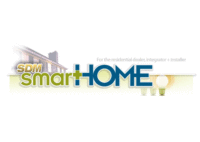Rebranding of APX Aims to Make Automation Mainstream

|
|
Vivint's headquarters in Provo, Utah New products from Vivint include an 1) automated door locks, 2) small appliance modules 3) fixed video cameras, and 4) pan tilt cameras. The Kwikset keyless-entry electronic locks communicate wirelessly with the Vivint Go!Control touch screen panel, allowing customers to arm and disarm their security system when they lock or unlock doors. Vivint’s video surveillance cameras use motion to detect movement and record activity outside or inside a home. Homeowners can remotely access recorded clips via their smart phone or computer and view “live” video feeds from the cameras at any time. Vivint lighting and small appliance controls allow customers to control a wide range of common household devices. From irons and coffee pots to sprinkler systems and lights, customers can turn appliances and lights on and off remotely using a smart phone or web-enabled device. |
Every year, the purchasing department at APX Alarm Security Solutions Inc., Provo, Utah, places an order for “a couple hundred thousand signs,” Alex Dunn, chief operating officer said. This, year, the purchase order included a few extra — try half a million extra. In the next month, the company is having its technicians change out more than half a million signs across the country, replacing the old APX Alarm signs with signs containing the company’s new name, Vivint™. APX Alarm introduced a new identity on Feb. 1, rebranding under the name Vivint™, and announcing its entry into the home automation market with the launch of new products and services that include automatic door locks, video surveillance and lighting and small appliance control.
The name Vivint is derived from the word “vive” meaning “to live,” and the word “intelligent.” In using this combination, Vivint’s mission is to help families “live intelligently” by creating simple, affordable, home automation systems where all devices work together to enhance safety and convenience and improve energy efficiency. Changing the name from APX Alarm to Vivint™ is a reflection of the company’s “expanded direction and capabilities,” according to the company in a press release.
It is an expanded direction and capabilities the company had to communicate to its more than 5,000 employees and its close to 500,000 customers.
The employees were the most important constituency to get on board according to Dunn.
“We knew the success of what we’re aiming to do moving forward was all about making sure that our employees bought into the new direction for the company and that they believed in what we are trying to do,” Dunn said.
“We’ve been communicating internally throughout the whole process and all of our employees have been involved. This wasn’t the result of two or three people working on it in a closed room. When we started broaching the subject there was certainly pushback — it is a big change. But we’ve had open dialogue since the beginning of the process, and we’ve been working through the objections. Over time as people understood what we were doing and why we were doing it, there’s been a lot of internal excitement growing. Now everyone’s ready to offer these expanded services. Our sales staff is excited to sell it, our technicians are ready to install it and our customer service staff is ready to go.”
The second group the company focused on communicating with was its customers, sending out letters letting them know about the rebrand and the new services.
“Most importantly, we let them know that we are the same great company and that we are going to give them the same great customer service,” Dunn said. “Customers can call in and get whatever additional services interest them.
Vivint’s new “additional services” are available through new home automation products that are specifically designed to integrate with the company’s existing security and energy management systems, creating a full-service home automation system for residential customers across the United States and Canada. At the center is the Vivint Go!Control panel, a central touch screen panel that communicates between each home automation product, giving customers access to their entire system via the touch of a button or remote control access via their smart phone or Internet browser.
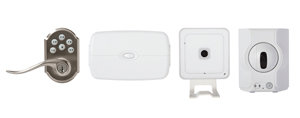
|
The products announced with the name change will be generally available beginning March 2011. For information, visit www.vivint.com.“Our Vivint products combine the comfort of home security with the latest advances in home automation and energy efficiency,” said Dunn. “By bringing these products to market, we are making home automation simple and affordable for the mainstream consumer.”
— By Heather Klotz-Young, Senior Editor

|
Glued to the TV
New data from The Nielsen Company, State of the Media 2010, estimates the average United States household has 2.5 television (TV) sets, with 1.9 standard definition TVs and 0.6 high-definition (HD)TVs. Furthermore, Nielsen data shows that HDTV households have more sets than the national average. 31 percent of Americans own four or
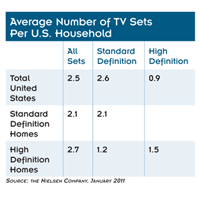
|
more TVs. The average American watches 35.6 hours of TV per week, or close to the equivalent of a full-time job. Looking at age demographics, Americans older than 65 watch an average of 48.9 hours of TV each week. In contrast, Americans age 2-11 watch an average of 25.8 hours of TV per week.
Home Automation Inc (HAI), New Orleans, was selected for a partnership with Memphis Light, Gas and Water (MLGW) to provide in-home energy displays for MLGW’s Smart Grid Demonstration Project. HAI will provide 500 home area network (HAN) devices to select MLGW customers.
HAI Devices Part of Home Energy Management Projects
Co-sponsored by the U.S. Department of Energy and MLGW, homeowners receive tools and training that assist with tracking electricity use and assist with reducing costs. The HAI devices are being provided at no cost to homeowners thanks to a smart grid investment grant program.
All 1,000 smart grid demonstration participants receive a smart meter installed at no charge and 500 homes will receive HAI’s in-home energy display. Homeowners can view exact bill to date, projected monthly bill, and see the instantaneous demand plus energy trend of the past hour. Graphs showcase usage and cost histories so customers can see when they are spending the most money on electricity.
HAI also was selected for a partnership with Entergy New Orleans to facilitate the SmartView Energy Management program. HAI will provide nearly 5,000 Home
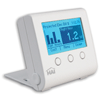
|
Area Network (HAN) devices for demand response, energy display, and comfort control.
Co-sponsored by the U.S. Department of Energy and Entergy New Orleans Inc., homeowners receive tools and training from Entergy utility company that assists with tracking electricity usage, assists with reducing costs, and in some cases, provides for credits on electrical bills. The HAI devices are being provided at no cost to the end user thanks to a Smart Grid Investment Grant program.
The program is open to both low-income homeowners and renting tenants. The low-income aspect of this program makes it one of the first of its kind to be deployed on this scale.
“HAI has several utility programs in North America with over 20,000 smart grid products in homes today, but there’s nothing better than partnering with the top energy provider in our hometown,” explained HAI Director of SmartGrid Solutions, Thomas Pickral. “We are proud to be partnering with Entergy of New Orleans to help the people in our community who need it most to save money on their electric bill.”
Scholarship to Honor CEDIA’s Vaughan
The Custom Electronic Design & Installation Association (CEDIA), Indianapolis, announced a scholarship honoring the late CEDIA chairman, Randy Vaughan. Those interested in participating in this fund may contact CEDIA’s chief operating officer, Don Gilpin at dgilpin@cedia.org.
Vaughan passed away after an illness last December while serving as CEDIA chairman.
“Randy was a 40-year veteran of the electronic systems industry and was a longtime CEDIA member and volunteer,” Baldwin stated. “He will be remembered among his peers and colleagues for his many contributions to the industry as a volunteer, an instructor and a leader.”
In addition to serving as CEDIA’s board chairman, Vaughan had been a founding member and a president of the National Systems Contractors Association (NSCA). He stayed in tune with the latest technology advancements by attending and teaching countless technical courses in the fields of audio, video, lighting, acoustics, control systems and more. Vaughan was a 40-year veteran of the AV industry on both the commercial and residential sides. He will be missed.
Lutron Electronics: Residential Opportunities Tour Dates Set
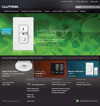
|
Coopersburg, Pa.-based lighting control manufacturer Lutron Electronics released its tour schedule. It’s designed to educate providers on next-generation residential solutions, including the HomeWorks QS system, introduced at the 2010 CEDIA Expo. HomeWorks is built using the infrastructure of Lutron’s commercial Quantum system. The training tour is made up of three days targeted at specific learning areas and audiences.
Day one targets sales and is ideal for principles, sales leaders, system designers and project managers. Material covered includes HomeWorks QS, Sivoia QS and RadioRA 2 new product overviews, retrofit opportunities, light commercial, fixtures and marketing opportunities. Days two and three target technical subjects and are ideal for programmers, installers, system designers and project managers. Material covered includes detailed HomeWorks QS and Sivoia QS technical training and new software. Members of Lutron’s engineering, sales, marketing and training teams conduct the sessions.
• March 17-19 in Orlando (at EHX)
• March 21-23 and March 23-25 in Chicago
• March 28-30 and March 30-April 1 in San Francisco
• April 4-6 in Houston
• April 6-8 in Dallas
• April 11-13 in Vancouver, British Columbia
• April 13-15 in Seattle
• April 18-20 in Toronto, Ontario
• April 26-28 in Boston
• May 2-4 in Las Vegas
• May 4-6 in Denver
• May 9-11 in Atlanta
For more information, visit http://resi.lutron.com/Portals/3/Education/Training/OpportunitiesTourInvite2011.pdf
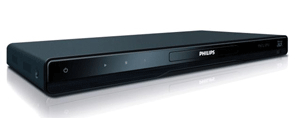
|
CEDIA Releases Third HDMI White Paper
The Custom Electronic Design & Installation Association (CEDIA) has a new white paper — HDMI Installation Best Practices. It covers best practices in high-definition multimedia interface (HDMI) distribution, including topics such as how to pull HDMI cables and basic HDMI tests. The paper also gives an overview of common interoperability issues.
HDMI is a compact audio/video interface for transmitting uncompressed digital data. It is a digital alternative to consumer analog standards, such as radio frequency, coaxial cable, composite video, S-video, SCART, component video, D-terminal, or VGA.
HDMI Installation Best Practices is the third document in CEDIA’s series of white papers on the topic of HDMI. Previous documents included Introduction to HDMI and HDMI Design and Initialization Sequence. All three documents are available through the CEDIA Marketplace free of charge to CEDIA members or priced at $9.99 each for non-members.
The HDMI Design and Initialization Sequence white paper was developed by CEDIA’s Technology Council, which works to help CEDIA members identify opportunities surrounding emerging and future technologies. Additional white papers on timely and relevant technology topics will be released throughout 2011.
ADT Pulse Shows Its ‘Green’ Muscle
At the National Association of Home Builders show in Orlando, ADT demonstrated the integration of Pulse within the KB Home GreenHouse. In addition to its aesthetic appeal [Martha Stewart contributed to the design], the KB Home Greenhouse achieves a new dimension of environmentally friendly building for KB Home; it is the company’s first net-zero energy home, meaning it is intended to produce more energy than it consumes over the span of a year. As such, it has been labeled as a “Maximized Energy-Efficient Home” by the U.S. Department of Energy. ADT Pulse makes it possible for anyone with an Internet-connected smartphone or computer to remotely access and control not only a home security system, but also lights, thermostats, video cameras and other appliances, all in real-time, the company said.
“ADT Pulse has ushered in a whole new generation of smart home automation services, giving people protection while enabling greater control of the home,” said Lewis Long, vice president of residential and small business marketing at ADT.

|
New Partnership Brings More Smart Appliances to the Home
After connecting a home HVAC or security system to the home network, the next step may prove to be the refrigerator, dishwasher and washing machine. Tendril, an energy platform company, and Whirlpool Corporation unveiled a relationship to launch smart home appliances in United States.
The Tendril platform has the capability to support millions of smart appliances in homes across America. Tendril of Boulder, Colo., will provide the backend technology infrastructure to support the commercial deployment of smart appliances including a range of connectivity-enabled services and applications. Whirlpool will integrate its smart appliances with the smart grid infrastructure by extending Tendril’s open standards-based, scalable and secure technology platform.
This integrated platform enables a dialog between appliances, consumers and energy providers, making the connected home and home energy management a reality. Smart grid experts at Whirlpool point out that “by leveraging Tendril’s energy service delivery platform, we will be able to provide consumers with a desirable solution to better manage their energy usage and spending.” For example, a refrigerator will automatically move its defrost cycle to a non-peak time without impacting the performance of the appliance. The Electric Power Research Institute estimates that implementing smart grid technologies could reduce electricity use by more than 4 percent annually by 2030.

|
Control4 Energy Management System Selected for Smart Grid
Home automation manufacturer Control4 of Salt Lake City was selected by NV Energy of Nevada to provide home energy management devices to customers who want to better manage their energy consumption.
Control4 software will help NV Energy manage residential load on a large scale. Integrated with NV Energy’s demand response management system, it will allow the company to communicate with and manage any number of home area networks on the Control4 platform. Customers with its devices will have multiple options for participating in demand response programs, including event-driven rebate programs as well as those triggered by price or rate tiers. “This is the first true rollout — not a pilot — of customer-driven demand response using home area network technologies,” said Richard Walker, president, Control4 Energy Systems.
According to NV Energy, as part of its NVEnergize smart grid deployment, a certain number of customers will have access to smart grid-compatible home area network solutions. The technology will provide customers with energy consumption and cost information and allow them to voluntarily participate in demand response events.
The Control4 platform gives consumers a choice regarding their participation in demand response events. Consumers will be able to create their own rules for reducing demand based upon factors such as price, comfort and economic preferences. NVE intends to roll out a minimum of 20,000 systems to customer homes by 2012 and will monitor consumer reception of the devices in an ongoing effort to create an appealing customer experience.
ABI Research: Femtocell Vital to Connected Home Success
Femtocells are now attracting consumers’ attention. Their initial use-case has been to enhance indoor cellular coverage, but it is now clear that their potential utility is much wider, according to ABI Research. It is based on “femtozone services” that use key attributes such as location and presence to trigger applications residing on the mobile device, or in the access point, the core gateway, or the cloud.
A simple example: a family alert system. A young person arrives at the family home, and the femtocell there registers the presence of his or her mobile phone and sends out an SMS notification to the parents. Such systems are already in use in Japan. Other kinds of femtozone applications can turn on lights or activate security systems, while still others can be used to sync content between mobile phones and other devices in the home.
ABI Research forecasts about 2.3 million femtozone subscribers in 2012, providing revenue of more than $100 million. ABI practice director Aditya Kaul said, “Femtozone services will be bundled with femtocell subscriptions and will also be available individually, increasing the perceived value of having a femtocell in the home. Eventually, mobile apps available from Apple or Google App stores may be designed to work via a femtocell.”
Integrated App Controls Home and Car
At the January 2011 Consumer Electronics Show, Directed Electronics of Vista, Calif., announced a major enhancement to the free Viper SmartStart app: integration with the security platform from Alarm.com, Vienna, Va., allowing users to arm and disarm their home security system directly from the Viper SmartStart app. It will include feature integration with the Alarm.com GSM-based residential security platform, allowing users to arm and disarm their Alarm.com-powered home security system right from the Viper SmartStart app on their smartphone. A quick flip of the wrist toggles between the car and home control screens. SH




